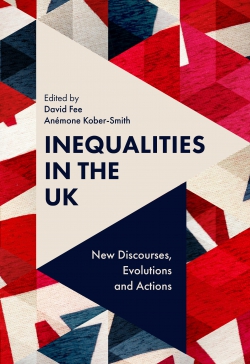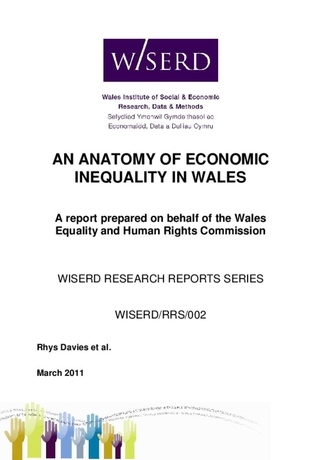Mae'r cynnwys hwn ar gael yn Saesneg yn unig.
The National Equality Panel’s report An Anatomy of Economic Inequality in the UK provided a milestone in our understanding of relationships between people’s characteristics and their financial position. Through detailed analysis of complex datasets, some newly available, it charted in depth how ‘inequalities in people’s economic outcomes – such as earnings, income and wealth – are related to their characteristics and circumstances – such as gender, age or ethnicity.’
The Equality and Human Rights Commission in Wales decided there should be a similar, detailed study of inequalities in Wales and that it commissioned the Wales Institute of Social and Economic Research, Data and Methods (WISERD) to lead and co-ordinate the production of the report An Anatomy of Economic Inequality in Wales. The findings provided a Wales specific analysis or evidence base. The data considered both the overall level of economic inequalities and the inequality that exists both between and within sub-groups of the Welsh population.
An Anatomy of Economic Inequality in Wales set out outcomes in education, employment, earnings, income, poverty and wealth in Wales in comparison to other areas of the UK. The data analysis compared outcomes by gender, age, ethnicity, religion, disability and housing tenure. Some key findings from the report are as follows.
- Pupils eligible for Free School Meals (FSM) are 2.5 times less likely to get A*-C grades in core subjects than their ineligible peers. People defined as both DDA disabled and as having a work limiting condition have by far the lowest educational achievements of all the equality categories. Both men and women in these groups are 3 times more likely to have no qualifications compared to the non-disabled.
- People who are both DDA disabled and have a work limiting condition experience most disadvantage in relation to employment. Seventy four per cent are not employed. This is more than 3 times the overall UK proportion of 22%. Women are disadvantaged in employment terms: in almost all population groups women face an above-average incidence of non-employment.
- Using a low-pay threshold defined as two-thirds of UK median earnings, the proportion of employees who are low-paid is higher in Wales than in the UK as a whole. Groups whose median earnings fall below the two thirds of the UK median for full-time employees are young people; those of Bangladeshi or Pakistani ethnicity; workers with no educational qualifications and workers who live in social housing.
- Approximately a fifth of the Welsh population live in poverty (measured after housing costs). Those living on the lowest incomes are once again the youngest, disabled people and those living in rented accommodation. However, lone parents are the most susceptible group, with almost half living in poverty. Being in work does not necessarily provide a route out of poverty, with 13% of in-work households in Wales living in poverty. In-work poverty is again most prevalent among lone parent households.
- Overall levels of inequality within Wales are not as wide as in the rest of the UK as Wales has relatively few people who earn the highest salaries or who are ‘very rich’. Those who are among the wealthiest 10% of people in Wales have around £100,000 less total wealth compared to the wealthiest 10% across the UK as a whole.
The full report can be downloaded by clicking here.
Report Data
Due to the volume of data included in the analytical report, it was not feasible to publish the data used to create the charts within the report. The excel files available below hold the data and versions of the charts from the main analytical chapters (Chapters 2-6). In each file, labelled to indicate to which part of the main report it refers, there are both charts and the data used to create them. Each excel workbook has a list of contents in the first worksheet and links that take users to the selected chart or table. Please refer to the main report for further explanation.
Chapter 2: Educational Outcomes in Wales
Chapter 3: Employment in Wales
Chapter 4: Earnings in Wales
Chapter 5: Income, Poverty and Wealth in Wales
Chapter 6: The Positions of Different Groups in Wales: A cross-cutting summary and conclusions









